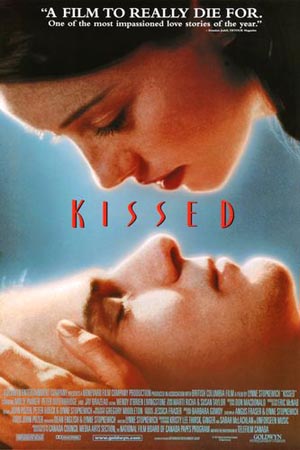
Horror is tits, ass, and a bucket of blood. Awesomely so. But horror isn’t only tits, ass, and a bucket of blood. There are many layers to our scary friend that the intelligentsia ignores and the fans forget. No matter how many snobs try to deny it, SILENCE OF THE LAMBS is a horror movie. PAN’S LABYRINTH is a horror movie. SEVEN, HEAVENLY CREATURES, and MULHOLLAND DR.: horror movies. Horror movies are comedies for morbid people, but the Chardonnay set doesn’t like acknowledging their darker tendencies so they try renaming the obvious (thrillers are just horror movies with their noses in the air). As for fans… we must remember horror’s ample reach. A reason that horror movies come in cycles (“Ghosts! Slashers! Remakes! More remakes… Fuck, they keep coming…”) is that we forget what counts as horror. So instead of adding new ingredients, we use the same ones ‘til we put ‘em away for a few years. Which is a shame because, as Stephen King said, horror acts as rehearsals for our death.
In these infighting times, we should remember things that connect us. Like death. Everyone reading this, and everyone who’s not, will someday go the way of all flesh. Don’t feel bad about it, though. Life is the longest thing you’ll ever do, so don’t waste any of it regretting something you can’t change. Own it like only horror fans can. Horror movies are inherently death-positive because there’s SO much death, there’s a touch of the submersion method. The surplus of death is also presented in a safe way because no one really dies. People die in an absurd variety of ways to the point where we have a pretty good idea of what dying’s like. We can laugh and think, “At least I’m not gonna die like that.” I’d go so far as to say that horror movies are also sex-positive. No matter how nervous you get or how bad the sex ends up being, you can take solace in the fact that you weren’t stabbed with a poker. Or had an alien baby burst from your stomach after fucking an astronaut. Or got sucked into a statue after it ripped off your skin. Or raped by trees. Bonus points if you know all the movies I referred.
It’s with these things in mind that I’d like to write to you about Lynne Stopkewich’sKISSED and death-positivity. This Canadian movie from 1996 is about a woman, Sandra (Molly Parker’s first movie), whose fascination with death at an early age grows stronger until it reaches its (un)natural conclusion. It was adapted from a short story by Barbara Gowdy, We So Seldom Look On Love. I, like less than most of you or more than some of you, can’t help but think that a necrophile must have the worst case of crotch rot. KISSED doesn’t address that. It’s a respectful examination of necrophilia that neither shies away from it nor indulges in it. Why is KISSED horror? Death is pretty much a character in it, and it pushes the boundaries of acceptance like any decent horror movie would. There’s no doubt in my mind that if it was a century-old novel, Sandra wouldbe partying with Carmilla and the modern Prometheus. As I write about KISSED, I’ll also weave in bits of death-positivity from two fantastic sites: Death and the Maiden and Order of the Good Death. When you get to the wicked end, I hope you feel a little better about death and track down Lynn Stopkewich’s movie. Let’s rot.

Something that should be pointed out about Sandra. Despite how dark her tastes get, she was never molested or traumatized. It’s a strange thing to focus on, but how often in movies does someone with morbid tendencies get a tragic backstory tacked on? They were either raped, or abused, or abandoned, or gaslit, or otherwise corrupted. Sandra was just a girl who loved death. Y’know, like most of us here. Her first big step towards going one step further with her Thanatotic affair happened at night. She started performing burial rites that she made up for dead animals she found, complete with incantating and dancing. She also rubbed her face and neck with the corpse. One day, Sandra met Carol and the two spend a summer doing rites during the day for animals they found. Well… most of the rites. At night, Sandra went back to the graves to brush herself with the dead. During a daytime rite for a family of chipmunks, Sandra took things too far and never saw Carol again. But she did see herself for the first time as others might. As if the moment couldn’t prepare herself more for adulthood, she also got her first period. Provided that she was born a little later, Sandra could’ve found herself among friends at a Death Salon.
If you’re a loner, you don’t need much besides a few books, a comfy chair, a drink, and some Bowie. Most people are social animals, so the need to talk about and share things they love is strong (can you imagine how much it costs to run Instagram or Tumblr?). That’s where Death Salons come in, for the dead-inclined. They’re essentially conventions for followers of Erebus, started by Megan Rosenbloom in October of 2013. Death Salons are full of conversations and events with death professionals to help people be more knowledgeable about, accepting of, and prepared for death. The first was held in Los Angeles, then it spread to London and San Francisco. A Death Salon Film Festival was created in 2016. But KISSED was a long way from 2013, so Sandra had to develop her love alone.
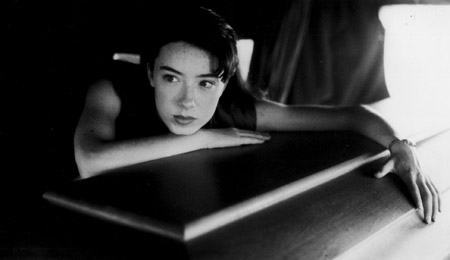
She took her dissections home from science class in high school. Though she thought the act profane, she examined them to “understand perfection”. She also tasted at least one of them. Sandra’s afterschool gig was delivering flowers, and one stop led her to a funeral parlor as well as to her future. She reflected that she did what she did to get closer to The End. “Any thought you act on pushes you further out.” The parlor seemed to be the first place she saw a human corpse, which was also the first one she kissed. It happened in a car wash, and that suggested one of three things: that it was a convenient location, that it was a washing-away of her old life, and that it was a dirty joke about getting wet. Interestingly, Stopkewich’s KISSED could be paired with David Cronenberg’s CRASH as Canadian films with a kinky car wash scene made in 1996. Actually, you could draw a few parallels twixt KISSED and CRASH. Keeping things morbid and Canadian, Gabby DaRienzois making a fun way to be death-positive.
Co-founder of Laundry Bear Games, Gabby has a few thoughts on death and video games that she’s currently smashing together. She feels that video games are a prime medium for exploring death because of their interactivity. After being inspired by Caitlin Doughty’s book about the history of the funeral industry, Smoke Gets in Your Eyes, and Order of the Good Death, she decided to go about making Mortuary Simulator. Most of us know what we know about mortuaries from PHANTASM, RETURN OF THE LIVING DEAD, AUTOPSY OF JANE DOE, and parts of THE NEON DEMON. Thus, we have a very skewed view of them. Gabby thankfully wanted to remind us that evil dwarves and witches aren’t waiting for us, and wanted to make us ok with what happened in mortuaries. After nine months of work, it grew to be about death, in general.Mortuary Simulator became A Mortician’s Tale, the style went from 2D to 3D, and she received funding from Ontario Arts Council to make it a full game. While preparing to enlighten us through pixels, Gabby has been enlightening us through speakers. She hosts a bi-weekly podcast, Play Dead Podcast, about interviews with game developers about death in their games. See more about A Mortician’s Tale here. Instead of waiting for Gabby, Sandra made her way closer to breaking a taboo.
From being a host at the parlor, Sandra decided to become an embalmer. During the first embalmment she sees, she’s disgusted. She doesn’t say why, but it could be because most of us would be or because she sees it as a violation. A convo with the parlor’s janitor may have given her the final push she “needed” towards necrophilia. She found out through him that her boss fucks the male corpses because they couldn’t feel it. The janitor thought that they could, which fed her already strong empathy towards the dead. Then she did what felt (un)natural. Put the lotion and buzzers away, the sex was tastefully done. There’s nudity, but she wasn’t fucking like her ass was on fire. The acts were sensual, like Tyler and Marla’s first sex scene in FIGHT CLUB. It’s insinuated that Sandra has an orgasm each time she has sex with a cadaver (she calls it “crossing over”). Yes, it happened more than once, but Lynn Stopkewich did a smart thing by not judging Sandra. It would’ve been easy to take the moral high ground, but that wouldn’t have been interesting. She left it up to the viewer to decide whether Sandra was wrong and to what degree. Feeling that sex and death shouldn’t mix? They’ve been Irish Car Bombing for centuries.
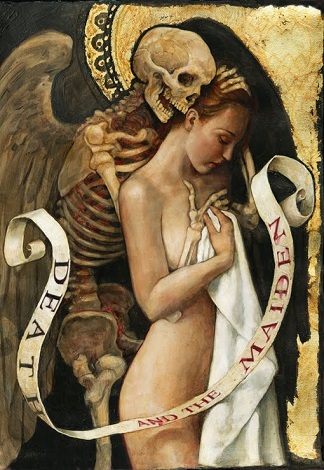
Apart from having much to say about sex and death, Dr. Christina Welch has also successfully crowdfunded the first wooden cadaver, a transi, to have been sculpted in over 450 years. Eleanor Crook has the whittlin’ honor. But back to Death and the Maiden. Dr. Welch points out that sex and death has a long history in Europe that also entwined with religion (and, eventually, gender). The summation of which being the Death and the Maiden paintings that were started in the 16th century. The subject came about because Protestants were wiping out Roman-Catholic’s purgatory and people thought, “Now what?” Purgatory was a sinner’s prison that led to heaven once the soul paid its debt, so it being taken away was a big deal. Protestants believed that one should pay their debts while alive or else they’re fucked. Coping came from artists like Albrecht Dürer (the progenitor), SebamBeham (who drew women masturbating each other with Death hanging around), and Hans BaldungGrien (who presented Adam as loving Eve and Death as ensnaring her). In the Death and the Maiden works, Death was masculine thanks to Adam, who brought death and sin (Romans 5:12). The Maiden exists because Eve brought life (Genesis 3:20) and the sin of sexual desire (Genesis 3:16). The motif endures today, though it’s shed all piety. Now to see if Sandra’s necrophilia endures when the living takes interest in her.
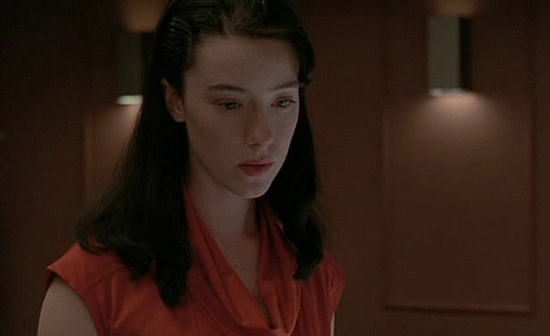
At a diner, she caught the attention of a guy. She blew him off, of course. She was studying at the time, and he was a distraction. The second time Matt approached her, Sandra confessed, in a soulmate-y way, that she wanted to be an embalmer because she slept with the bodies. And he’s ok with that (if only oversharing during early convos could be so simple and clean…). Before I go on, I wanna address how smartly Molly Parker played Sandra and her unique love. She acts so matter-of-factly, though she could’ve easily been a quirky character played by the likes of Fairuza Balk or Amanda Plummer. They would’ve been amazingSandras, but playing her as normal is equally so. Life went on with Sandra and Matt, then they took the next step with his head twixt her legs. It was the first time she was eaten out, and she was bored (an attempt to see if she if she could give up the dead). Later that night, she rode the face of a corpse and was ecstatic. Sandra believed that cadavers could feel and that each has an essence that feels different. Something that she couldn’t get from the living. The strength of her Thanatotic love is shared by Mexico, but they are faaaaaar healthier in expressing it.
Dia de Muertos, Sarah Troop explains, began with early Mexicans as a month-long “Little Feast of the Dead”. ‘Til Spaniards conquered Mexico and forced them to stop under penalty of taxation and torture. “So that these abominations can be entirely uprooted.” In the 19th century, the wealthy were pressured to support the poor when a family member died. That was done by way of asking for “una calavera” (a skull) at funeral processions. The act evolved into giving kids and the like sugar skulls. The “mascot” of Dia de Muertos, La Catrina (a skeletal woman in fancy dress), was drawn by José Guadalupe Posada to satirize Mexicans who adopted the European aristocracy. Altars were made to contain offrendas (offerings and such) and were decorated with cempasuchil, flowers whose scent lures the dead. Food by way of pan de muerto (bread of the dead) is offered to the departed and resembles a mound of dirt over a buried body. Tamales and morbid confections are enjoyed by the living as well as root vegetables (thought to be fed by corpses). October 31st is when the dead children come, and November 1st is for the dead adults. Both afternoons, candles and incense burn on altars with people sitting near them, and doors are opened to let their spectral guests in. Dr. Andrew Chesnut brings up how Santa Muerte has a strong following with LGBTeamsters. Santa Muertistas like Arely Vazquez feel empowered and protected by her. Mexican death values weren’t in Sandra or Matt’s life, so their relationship began to tragically fall apart.
One night, Sandra and Matt were in his bed and she came across a notebook. Apparently, he had been keeping tabs on her necrophilia through her confiding in him. He did it to try understanding her. She thought he was a fucking creep and left. Time went by without either seeing each other, then he showed up at a funeral service. She manages to be civil about it and gets him outside, where he confesses that he needs to fuck a corpse to understand her. She gets more offended because, remember, it’s not a sexual thing. It’s ritualistic with sex as a consequence, but poor Matt couldn’t wrap his mind around that. Not many could. Next, he tried pretending to be a corpse for her to cross over with, but that frustrated her. Out of desperation and affection, he called her to his apartment one last time. Finding him nude and about to hang himself, she tried to get him to stop. He told her that he was gonna kill himself so she’d love and fuck him. He did. She obliged, and continued with all aspects of her job at the funeral parlor.
Megan Devine (ditto the American Foundation for Suicide Prevention) wants to help people navigate suicide. Her audiobook, Everything is Not Okay, talks about being practical in how you address and cope with suicide. Elsewhere, she talks about death-positivity and suicide. Specifically, both sides of the discussion about conversating about death with someone who was suicidal. If you’re the addressor, it’s good to ask for permission. It shows that you respect them and that you’re willing to step into their darkness. If you were once suicidal and a convo veers towards death, acknowledge your friends’ nervousness about it maybe being a trigger. Be proactive, listen to their fears, and remind ‘em that you’re fine.
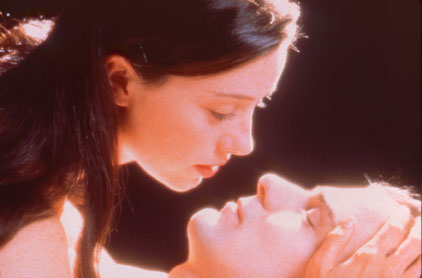
We’ve gotten through a lot about death-positivity and KISSED, but there’s so much more to find out about the former. I didn’t get a chance to mention one of the current kings of death-positivity, Joel-Peter Witkin. He’s made death photography into an artform, along with other kinks. Discover his work and more death-positivity, and tell me about it. I’ll leave you with a fitting piece of his and some Latin that translates to “We who are about to die salute you.”
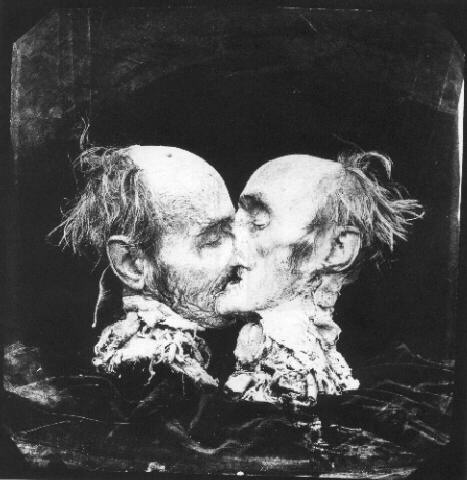
Mortiturite Salutamus.
Tags: Angus Frazer, Barbara Gowdy, Canada, death, Horror, Joel-Peter Witkin, Lynne Stopkewich, Molly Parker, Peter Outerbridge

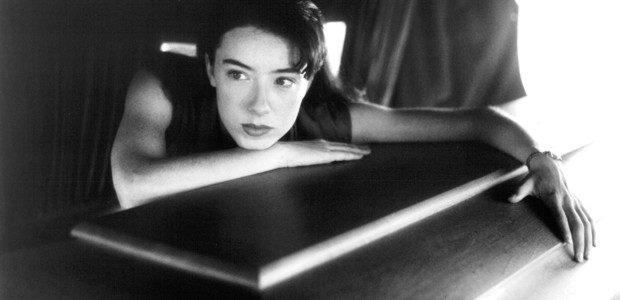
No Comments